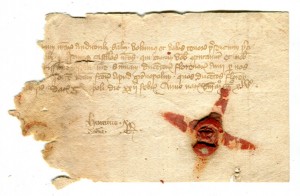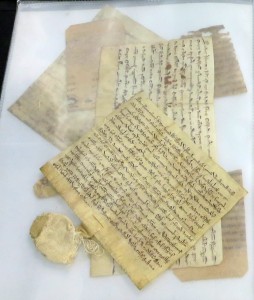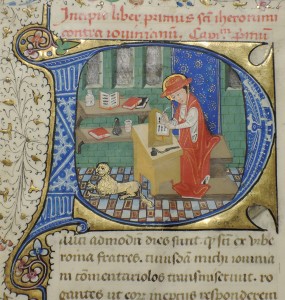1320 Letter of Berengarius
Concerning a Dispute at Calahorra
Or Not!
Single-Sheet Document
of Cardinal–Bishop Bérengar de Frédul
dated 13 July 1320
in Latin on Vellum
with Red Cord Tie
and Docketing on the Dorse in Spanish
Budny Handlist 21
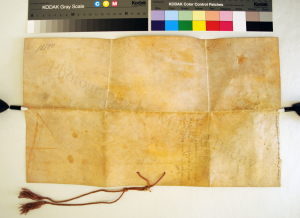
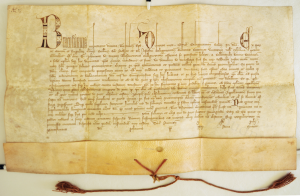
Continuing our series on Manuscript Studies, our Principal Blogger, Mildred Budny (see Her Page) describes a single-sheet vellum Latin document, plus cord, which came within the span of her conservation, photography, and research for the Illustrated Handlist.
There, the document holds Number 21. Unlike the other items (so far) in the Illustrated Handlist, this one appears to be a forgery, albeit skilled. In a word: Curious.
The Thing as Such
First some ‘statistics’.

Cameo of Pope John XXII. Photograph via Wikimedia Commons.
Epistolary Document of
Bérenger Fredoli (circa 1250 – 1323),
Cardinal–Bishop (1309–1323)
of Frascati near Rome,
Issued Purportedly during
Year 4 of the Reign
of the Avignon Pope John XXII (1316–1377)
and dated 13 July 1320,
with knotted red cord tie
Circa 230 × 423 mm with flap closed; full height counting flap = circa 169 × 316 mm
Single column of 18 long lines
< written area circa 169 × 316 mm >
plus red knotted cord tie laced through the flap
with docketing in Spanish on the dorse
Provenance Interrupted
The document was acquired by gift in 1955. The method and appurtenances of presentation provide the name of the donor, Philip Hofer, (1898–1984), his letter announcing and accompanying the gift as a thank-offering, and his custom-made box for the offering.
However, it provides no information whatsoever about the provenance, source of acquisition, the presentation provides other useful elements of information which the intermediary would have had. We are stuck with those gaps. Shame.
About those lamentable and noxious with-holdings of information in the transmission of materials between modern handlers, some of our blogposts already document the miseries in trying to piece together the traces. See the blog’s Contents List.
We are entitled to wonder, also, about the caliber of the gift, which, itself doubtless well-meaning between equals at Harvard with stature and means, carries questionability in its own ‘right’ (or ‘wrong’), considering the dubious nature of the document itself.
Information about where and how the donor acquired the document is much to be wished. Or what he thought it constituted.
As a Gift
Folded in half horizontally and then in thirds across, along its medieval folds, the document was contained in its custom-made 20th-century lined clam-shell box for presentation to the Owner by Philip Hofer, along with the letter describing that presentation, signed by Hofer and dated 14 December 1955.
With that presentation enclosure, I first came to know the shape and features of the object. It took a while before the oddities came pressingly into the forefront.
Happy as a Clam-Shell
The Presentation Box
In and Out. All About.
1. Outside
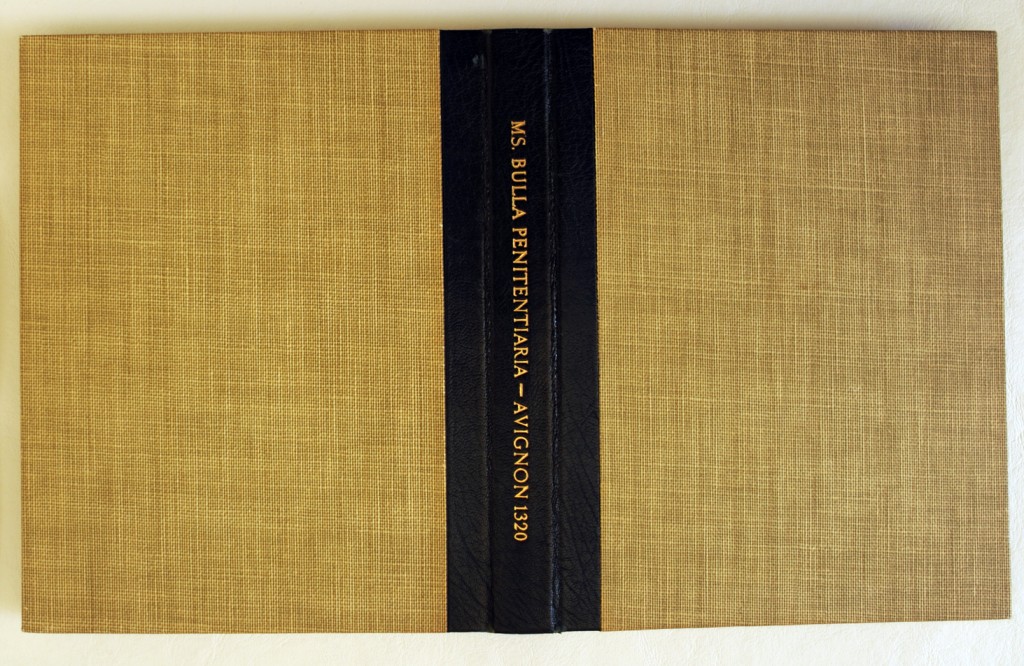
2. Inside
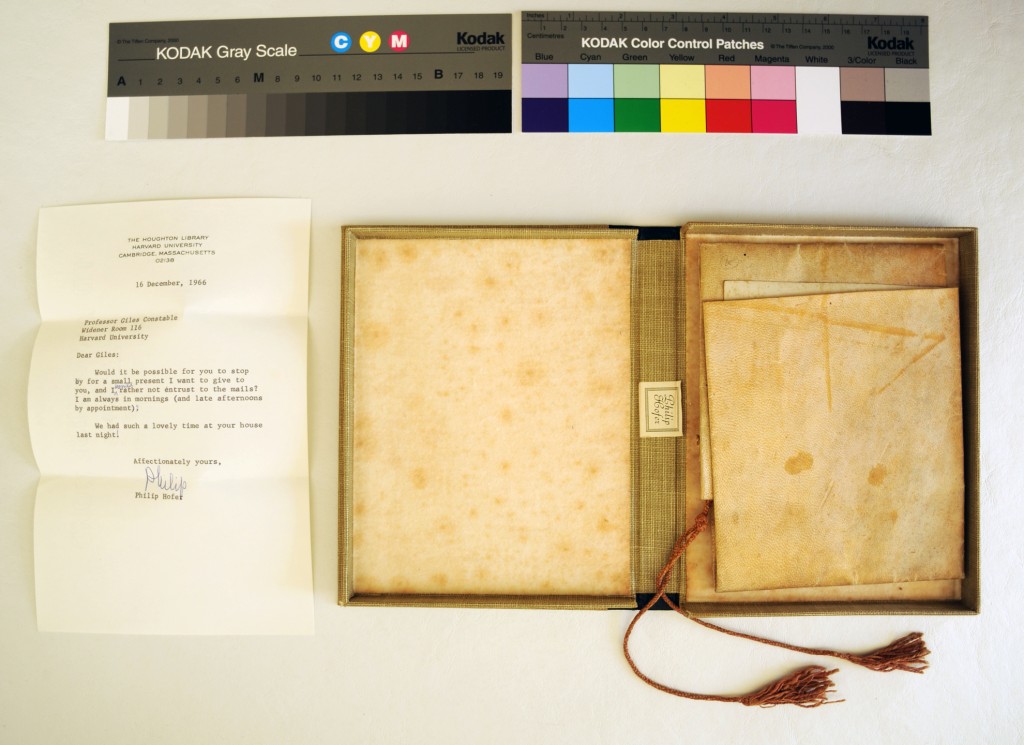
Unfolded Interior of Custom Clam-Shell Box with Donor’s Presentation Letter and Folded Document
CenterFold
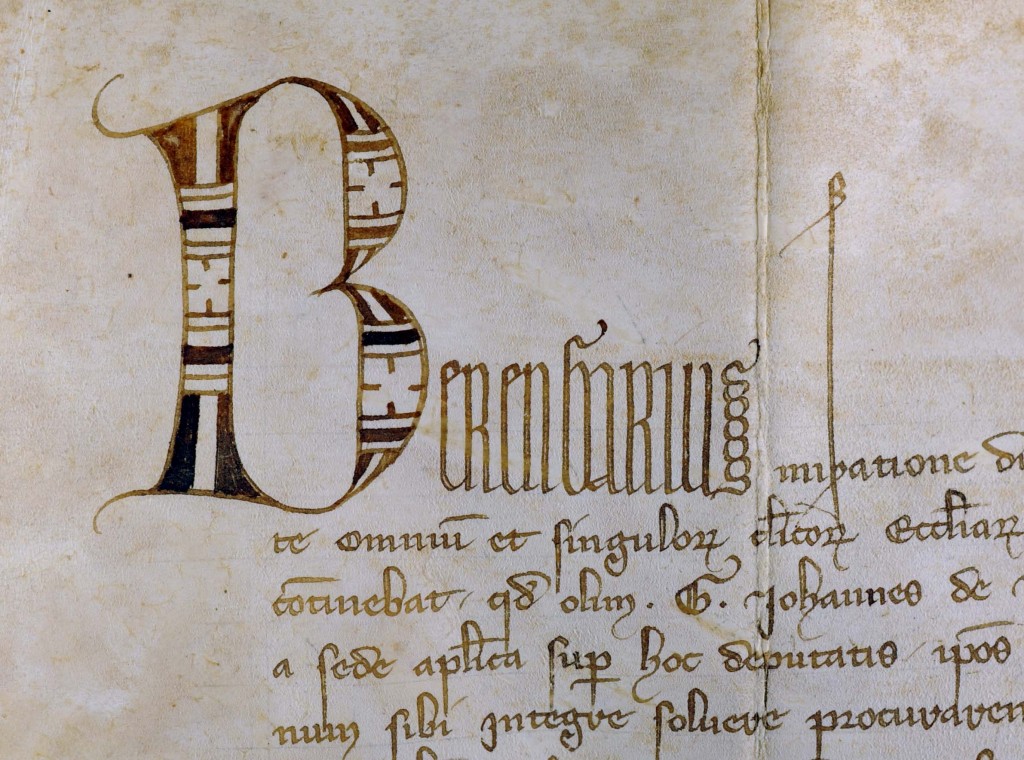
Who, What, Where, Wherefore?
The text of the document begins with an enlarged and decorated ink initial B, which stands upon the baseline of the first line of script and rises firmly into the upper margin. The other letters of the name Berengarius ascend as a clustered, narrow group, before the document settles into the main script, which provides an upright, neatly written Gothic Textualis, with some curved, hook-like tips ascending or descending into the interlines. Although the lettering, which employs some abbreviations, is, for the most part, clearly decipherable, the sense of the phrasing overall proves a puzzle.
A transcription and attempted translations of the text reveal that the Latinity leaves something to be desired in terms of clarity or comprehension. Several of us looking at its challenges wonder about its command of the language. Neatly put, as one scholar declared in a message: “I cannot make out much of your document; the Latin is awful!”
The Bishop addresses the recipient of the letter, the Thesaurius (“treasurer”) of Calahorra in the province of La Rioja in northeastern Spain, with an appeal on behalf of the clergy of its churches of Saint Andrew and Saint Christopher. The clergy claimed that they had “at one time” made a deal with the Thesaurius, who possibly had given them property to administer (or something). The deal went sour. They claimed that the Thesaurius had pulled a fast one on them; they appealed to the Bishop, who had authority from the Pope; and the Bishop turned to the official. To whit, this Letter. To quote our scholar again: “That’s the best I can do. I find most of the Latin incomprehensible.”

Panorama view of the historical district of Calahorra. Photograph: Own Work by De Zarateman via Creative Commons.
 The letter declares its issue during the reign of Pope John XXII (1244–1334), the second Avignon Pope (reigned 1316–1334). The issue of the letter relates to the span of “political and administrative correspondence of the Avignon popes, 1305–1378”, as surveyed, for example, by Patrick Zutschi in a paper presented in 1988 (published in 1990). As such, it would hold interest as a relic of that contested period in the papacy.
The letter declares its issue during the reign of Pope John XXII (1244–1334), the second Avignon Pope (reigned 1316–1334). The issue of the letter relates to the span of “political and administrative correspondence of the Avignon popes, 1305–1378”, as surveyed, for example, by Patrick Zutschi in a paper presented in 1988 (published in 1990). As such, it would hold interest as a relic of that contested period in the papacy.
*****
When the Dust Has Settled
An interior view of the fold:
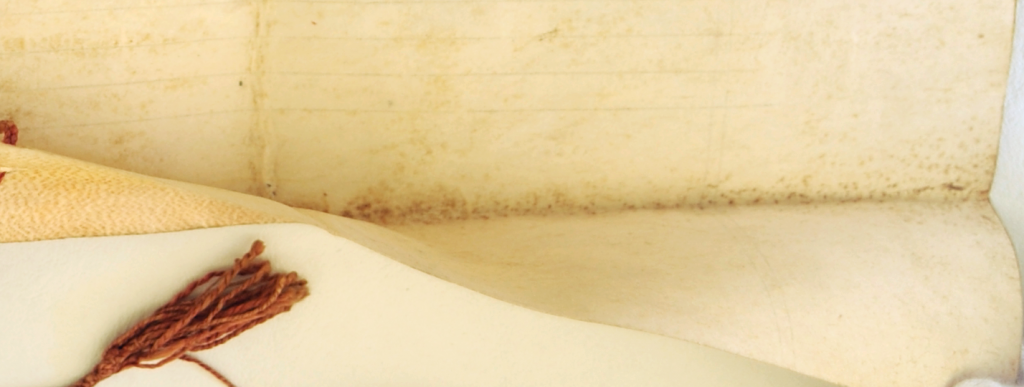
We plan to write some more about this questionable document, but other tasks and challenges (including illnesses and a death in the family) have interfered with the completion of the report. Returning somewhat to health, I decided that it might be useful to send forth these observations, questions, and images, to set the discussion going. Do you have any views on this matter and material? Please let us know.
Meanwhile, feast your eyes on its features. Photography by Mildred Budny.
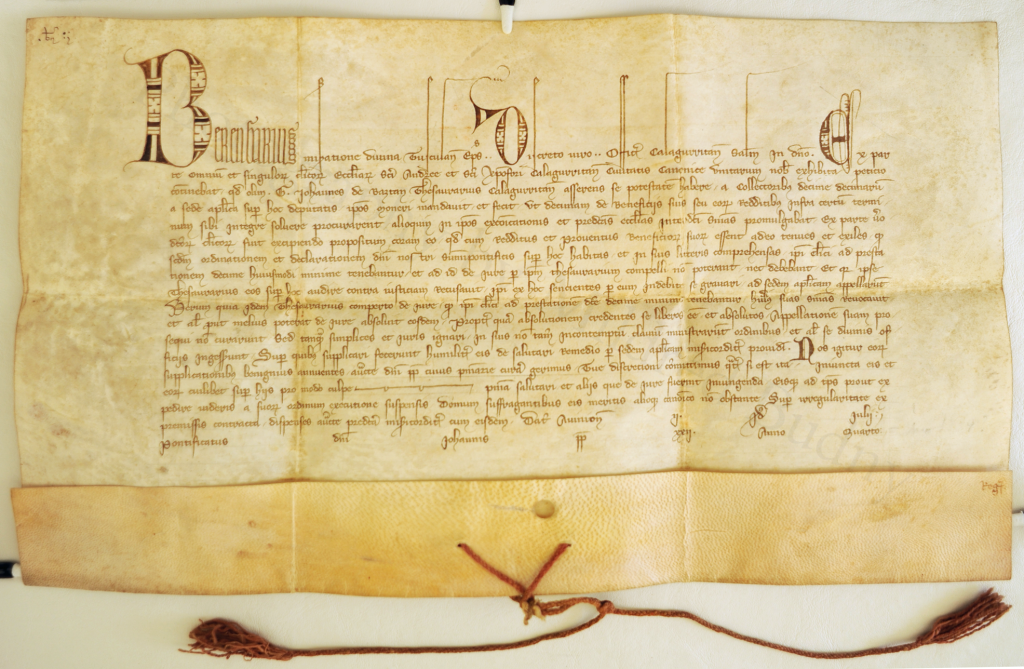
*****

*****
Some Background Reading
Patrick Zutschi, “The political and administrative correspondence of the Avignon popes, 1305–1378: a contribution to papal diplomatic”, in Actes de la table ronde d’Avignon (23-24 janvier 1988). Publications de l’École française de Rome, 138 (1990), 371–384
*****
More to come. Please watch this space.
